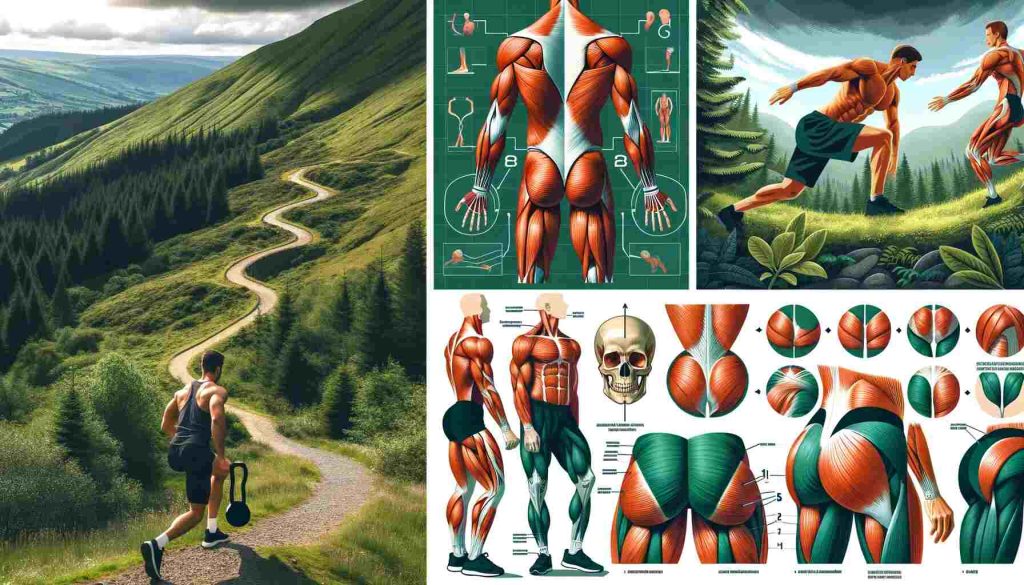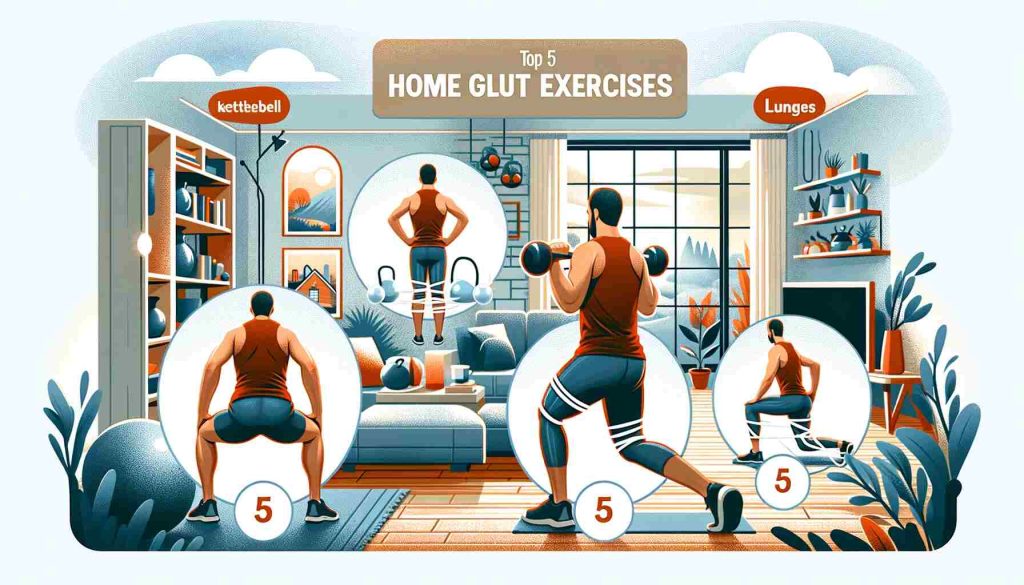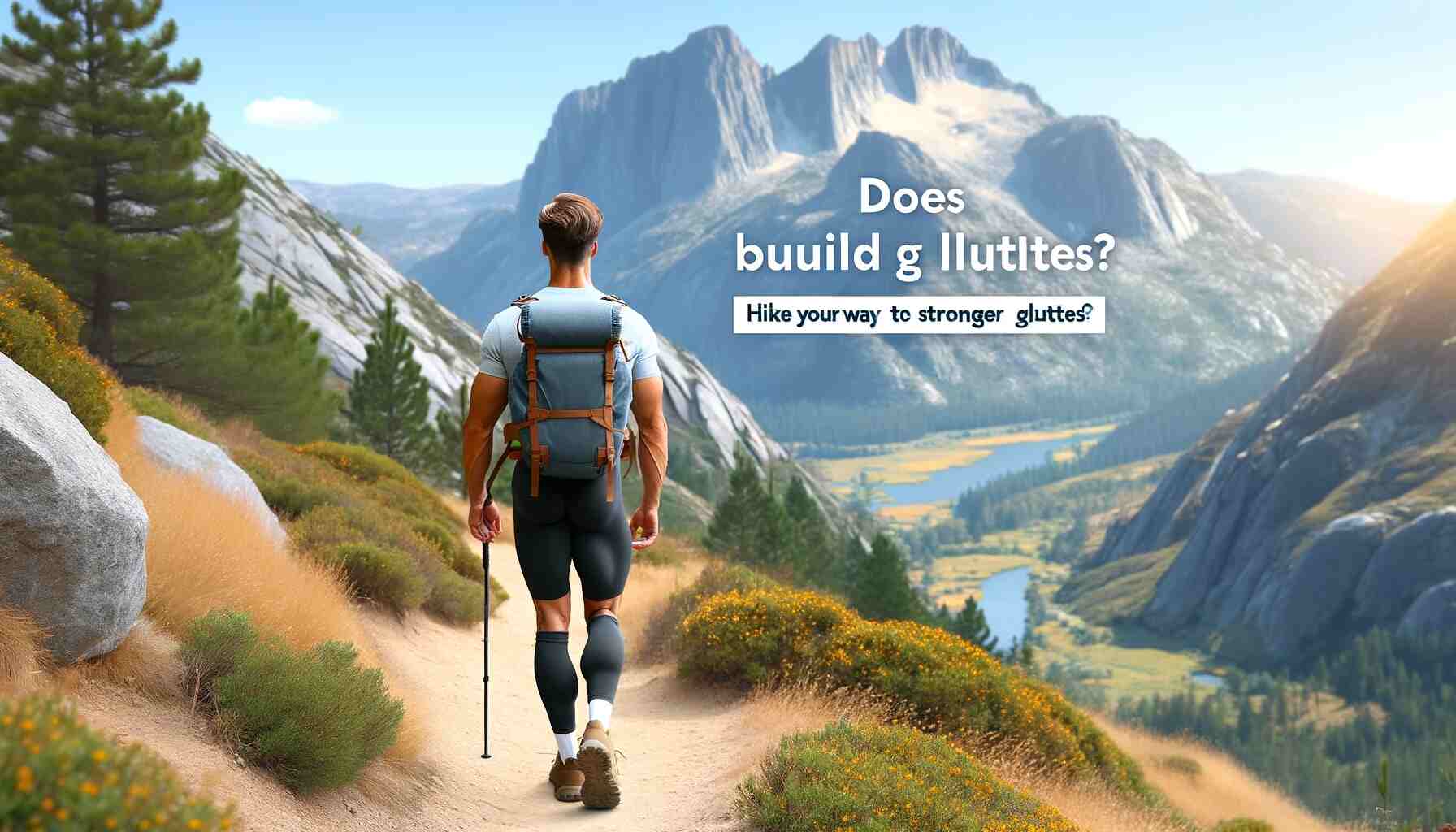Are you someone who loves to venture into the great outdoors, soaking in the beauty of nature while getting some exercise? Or perhaps you’re a fitness enthusiast looking to build stronger glutes and enhance your overall athletic performance. Whichever category you fall into, the question that often arises is, “Does hiking build glutes?”
Yes, hiking can help build leg, glute, and core muscles, but to see significant growth, it’s essential to include other exercises and maintain a proper diet.
In this comprehensive article, we will dive deep into the topic and provide you with a wealth of information to help you understand how hiking can contribute to stronger glutes and how you can maximize the benefits.

Table of Contents
ToggleUnderstanding the Glutes
Before we dive into the specifics of hiking’s impact on your glutes, let’s first understand the gluteal muscles themselves. The buttocks, commonly referred to as the glutes, comprise three primary muscles: the gluteus maximus, gluteus medius, and gluteus minimus. These muscles play a crucial role in various movements, including hip extension, leg abduction (spreading your legs apart), and thigh external rotation. Additionally, the glute medius acts as a stabilizer for the knee, preventing it from caving in during movements.
The Science of Muscle Growth
To comprehend how hiking can affect your glutes, it’s essential to grasp the basics of muscle growth, scientifically known as hypertrophy. Muscles continuously undergo two processes: anabolism (muscle growth) and catabolism (muscle breakdown). To achieve muscle growth, anabolism must outweigh catabolism.
Building muscle requires a stimulus, and several factors contribute to this process:
- Mechanical Tension: This involves loading the muscle with progressively heavier weights or resistance. Hiking, being a longer-duration activity, doesn’t provide the high mechanical tension necessary for significant muscle growth.
- Muscle Damage: Micro-tears in muscle fibers occur during intense workouts. When these tears heal, muscle size increases.
- Metabolic Stress: Exercise that induces muscle burning and a “pump” creates metabolic stress. High reps with light weights near muscular failure can lead to muscle growth, similar to using heavier weights with moderate reps.
Does Hiking Build Glutes?
As I said before the short answer is yes but with some caveats. Hiking can indeed build glutes, especially for untrained individuals, particularly when hiking uphill. The motion of walking uphill engages the glutes, and the uneven terrain necessitates stabilization, further involving these muscles.
However, as you become more conditioned, hiking alone may not provide sufficient stimulus for continued muscle growth. To maximize the glute-building potential of hiking, it’s crucial to focus on consciously contracting your glutes with each step. Moreover, you can enhance the effectiveness of hiking as a glute workout by increasing the workload. This can be achieved by carrying a weighted pack, tackling steeper inclines, or hiking at a faster pace.
While hiking may not match the effectiveness of a dedicated glute-focused muscle-building program, it offers several benefits, such as burning calories and improving cardiovascular fitness. These benefits can contribute to lower body fat levels and increase overall conditioning, which can complement your efforts to build stronger glutes.
Strategies for Transforming Hiking into a Glute-Boosting Workout
If you’re eager to make hiking a more effective glute workout, here are some strategies to consider:
- Incorporate Walking Lunges: On level terrain without obstacles, mix in sets of walking lunges during your hike. Focus on pushing off the heel of your front foot and maintain a slight forward torso angle to engage the glutes effectively.
- Take Longer Steps Uphill: When ascending steep inclines, opt for longer strides. This movement pattern engages the glutes more effectively than shorter steps. Concentrate on pushing off from your heels to maximize glute engagement.
- Carry a Weighted Pack: Adding a weighted pack to your hiking gear can increase resistance and intensify the workout. However, exercise caution when selecting the weight, as it can increase the risk of injury on rugged terrain.
Hiking is also a great way to build your calves.

Top 5 Home Glute Exercises
While hiking can contribute to glute development, incorporating targeted glute exercises into your fitness routine can help you achieve more significant and consistent results. Here are five effective home-based glute exercises that require minimal equipment:
1. Kettlebell Swing
Equipment Required: Kettlebell
The kettlebell swing is a dynamic exercise that engages the entire posterior chain, including the glutes. To perform kettlebell swings:
- Stand with your feet shoulder-width apart and hold the kettlebell with both hands in front of you.
- Hinge at your hips, keeping your back straight, and swing the kettlebell between your legs.
- Explosively extend your hips and swing the kettlebell forward, bringing it to shoulder height.
- Control the swing as it returns between your legs and repeat.
2. Goblet Squat
Equipment Required: Kettlebell or dumbbell
Goblet squats are an excellent exercise for targeting the glutes and engaging the core. To perform goblet squats:
- Hold a kettlebell or dumbbell close to your chest with both hands.
- Stand with your feet slightly wider than shoulder-width apart.
- Lower your body into a squat, keeping your chest up and knees tracking over your toes.
- Push through your heels to return to the starting position.
3. Lunges
Lunges are a versatile exercise that works the glutes, quadriceps, and hamstrings. Here’s how to do lunges:
- Stand with your feet together and take a step forward with one leg.
- Bend both knees to lower your body, ensuring your front knee is above your ankle.
- Lower until your rear knee nearly touches the ground.
- Push off your front foot to return to the starting position.
- Repeat with the other leg.
4. Banded Side Steps
Equipment Required: Hip Circle Type Band
Banded side steps target the glutes and hip abductors. To perform banded side steps:
- Place a hip circle type band around your thighs just above the knees.
- Assume a partial squat position with your knees slightly bent.
- Take a step to the side while maintaining tension on the band.
- Continue stepping sideways, leading with one foot, and then return to the starting position.
- Repeat in the opposite direction.
5. Glute Bridge
Equipment Required: None (bodyweight exercise)
Glute bridges isolate and strengthen the glute muscles. To perform glute bridges:
- Lie on your back with your knees bent and feet flat on the ground.
- Place your arms at your sides, palms facing down.
- Push through your heels to lift your hips off the ground until your body forms a straight line from your knees to your shoulders.
- Squeeze your glutes at the top and hold for a moment.
- Lower your hips back to the ground and repeat.
Principles for Building Glutes (or Any Muscle)
To achieve the best results in building your glutes or any muscle group, it’s essential to adhere to specific training principles:
1. Consistency: Building muscle is a gradual process that requires consistent effort. Aim to target your glutes at least twice a week over several months to see significant progress.
2. Progressive Overload: Continually challenge your muscles by increasing the load, adding reps, sets, or manipulating other variables like exercise tempo and rest periods.
3. Intensity: Choose the right intensity for your workouts. For muscle growth, working with medium resistance for moderate reps and pushing close to muscular failure is effective.
4. Frequency: Triggering muscle protein synthesis more frequently can accelerate muscle growth. Consider working your glutes multiple times per week.
5. Volume: Higher training volume, measured as sets multiplied by reps and weight, correlates with more substantial muscle growth. Beginners can see progress with fewer sets, while advanced athletes may require higher volumes.
At-Home Glute Workouts
Now that you have a better understanding of the principles, here are three home-based glute workout routines suitable for different fitness levels:
Beginner Workout
Equipment Needed: Hip Circle Type Band
- Perform this workout 2-3 times per week on non-consecutive days.
- Execute the exercises in a circuit with short rests between exercises. Rest for 2 minutes after completing the circuit.
- Aim for three rounds.
Workout:
- 10 One-Legged Romanian Deadlifts (no added weight)
- 10 Two-Legged Glute Bridges
- 10 Banded Side Steps per direction
- 10 Rear Stepping Lunges per leg
- 10 Bodyweight Squats
Progression: Add one rep per week until you reach 20 reps per exercise.
Intermediate Workout
Equipment Needed: Kettlebell (12 KG for women, 16 KG for men)
- Perform this workout twice per week with at least 2-3 days of rest between sessions.
- Use an interval timer for an EMOM (Every Minute On The Minute) workout.
- Start with a 6-minute EMOM per exercise and add one minute each week until reaching 12 minutes per exercise.
Workout:
- 5 Rear Stepping Lunges per leg holding a kettlebell in the Goblet position
- 8 One-Legged Glute Bridges per leg
- 20 Kettlebell Swings
- 10 Goblet Squats with a kettlebell
Advanced Workout
Equipment Needed: Kettlebell (20 KG for women, 32 KG for men), Hip Circle Glute Band, Resistance band (13-15 mm wide)
- Perform this workout twice per week with at least 2-3 days of rest between sessions.
- Use an interval timer for an EMOM (Every Minute On The Minute) workout.
- Start with an 8-minute EMOM per exercise and add one rep per exercise per week for four weeks. Then, add a minute to each exercise for two weeks.
- After six weeks, plan a deload or recovery week due to the intensity of this routine.
Workout:
- 8-minute EMOM per exercise:
- 20 Banded Kettlebell Swings
- 10 Banded Goblet Squats
- 5 Rear Stepping Lunges
- 10 Banded Side Steps per side

The Wrap-Up
In summary, while hiking offers numerous benefits, including endurance and calorie burning, it may not be the most efficient method for building significant glute muscle. To achieve substantial and consistent glute development, consider combining hiking with a dedicated muscle-building program. Remember that building muscle is a gradual process, so stay committed to your fitness routine for the long term to achieve your glute-strengthening goals.
Incorporate these home-based glute exercises into your routine, following the principles of consistency, progressive overload, intensity, frequency, and volume. Whether you’re a beginner, intermediate, or advanced athlete, these workouts can help you work toward a stronger and more defined set of glutes.
Here is another article that you should read next: Can Hiking Build Muscle? The Muscle-Building Power Of Hiking










